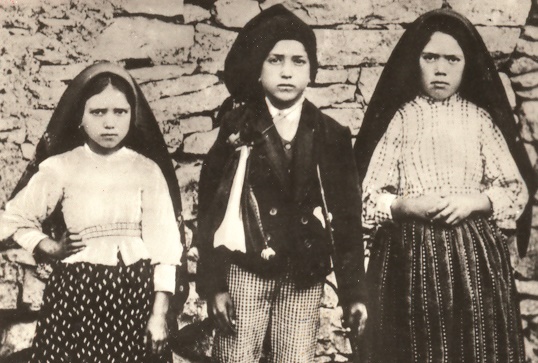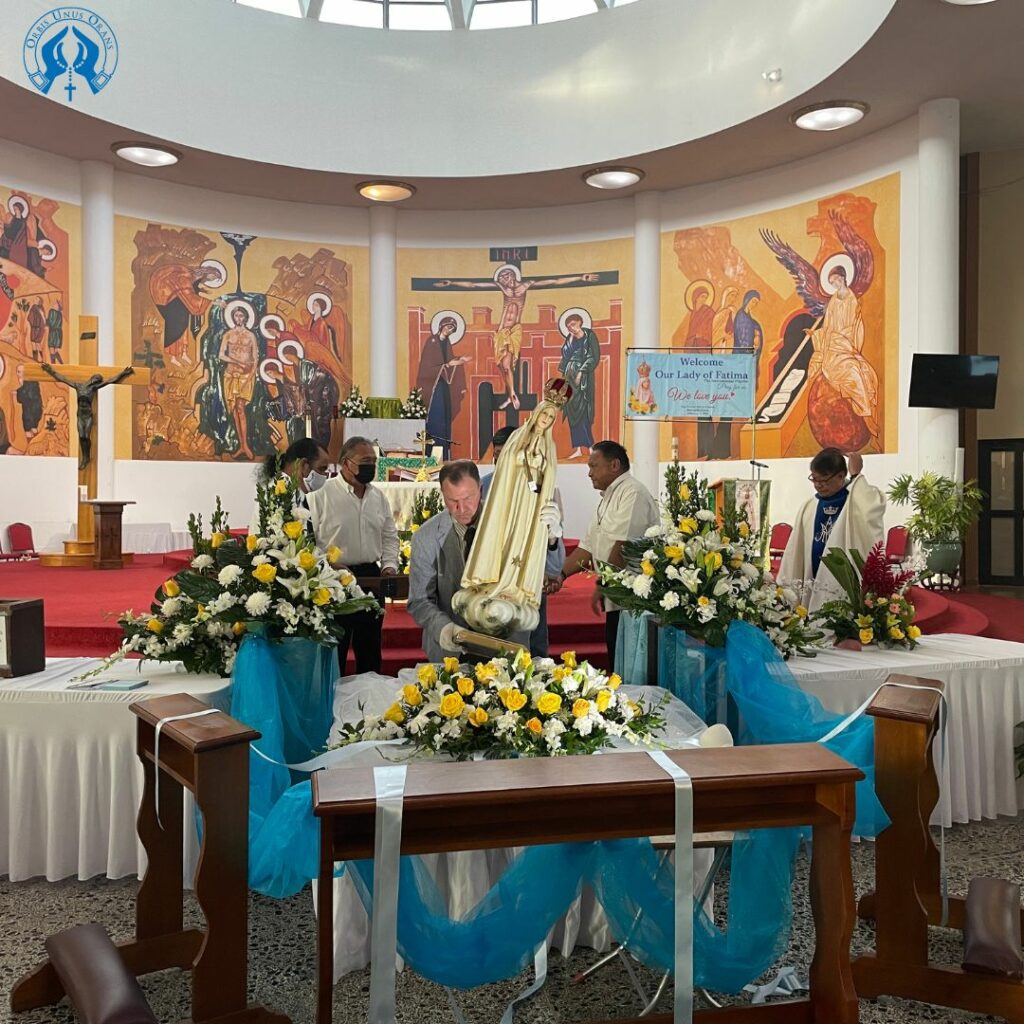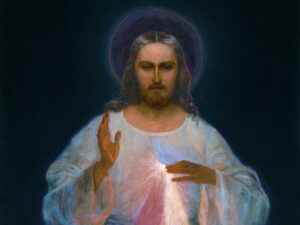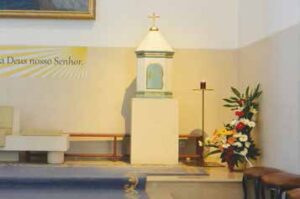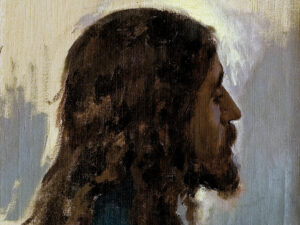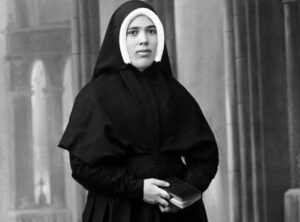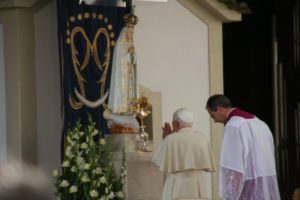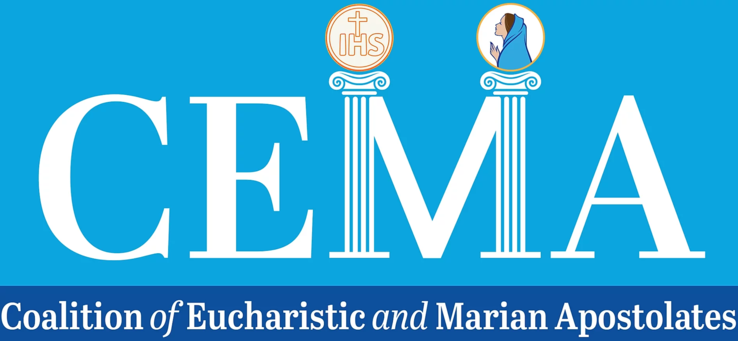by Donal Anthony Foley –
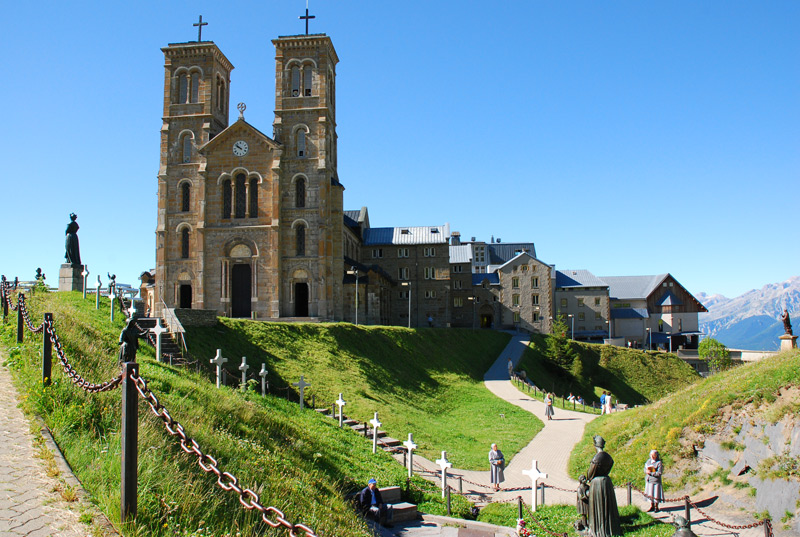

The single Marian apparition at La Salette in southeastern France took place on Saturday, Sept. 19, 1846. This apparition was somewhat overshadowed by the events at Lourdes in 1858, when St. Bernadette saw Our Lady. But it is still an important event in its own right and it is interesting to compare it with the apparitions at Fatima in 1917.
Mélanie Calvat, 14, and Maximin Giraud, 11, the two children privileged to see Mary, came from the town of Corps near Grenoble, France. On that Saturday in September, they were looking after their employer’s cattle high up on the pasture above La Salette, a village near Corps, when they saw a mysterious apparition.
A globe of light opened to reveal a resplendent woman seated on a stone, with her head in her hands. The children later described her as very tall and beautiful, wearing a long, white, pearl-studded, sleeved dress and a white shawl, with a tiara or crown on her head. Hanging from her neck was a large crucifix adorned with a small hammer and pincers, and a brilliantly shining figure of Christ. The whole effect was as if she was made of light.
Speaking tearfully, she told them that unless people repented she would be forced to let go the arm of her Son, because it had become so heavy. The Blessed Virgin then went on to complain that she had to pray ceaselessly to her Son for them; but the people still worked on Sundays and blasphemed, using God’s name in vain. She spoke of coming punishments for these sins, including crop blights and famine. She likewise confided a secret to each of the children, which they were not to divulge—although eventually these secrets were made known to Pope Pius IX.
Before disappearing, Our Lady asked Mélanie and Maximin to spread her message. When they returned home they told their story, an account of which was taken down in writing the next day. They faced much opposition in making Mary’s message known, but they maintained their accounts with resolution.
The bishop of Grenoble faced quite a degree of opposition in investigating the apparition, and it was only after four years and having set up two commissions of inquiry, that he approved of devotion to Our Lady of La Salette in the following terms:
“We declare that the apparition of the Blessed Virgin to two shepherds, on September 19, 1846, on a mountain in the Alps in the parish of La Salette, bears in itself all the marks of truth and that the faithful are justified in believing without question in its truth. And so, to mark our lively gratitude to God and the glorious Virgin Mary, we authorize the cult of Our Lady of La Salette.”
La Salette and Fatima
There are certainly some similarities as regards La Salette and what happened at Fatima. For example, Mélanie and Maximin were shepherds just as the three seers of Fatima. Our Lady seems to have a preference for appearing to the poor and simple, the humble and little children, those often disregarded by the world. She does this no doubt because it is only such as these who can respond in the way that she wants: with open hearts, with gratitude and without any desire to capitalize on her appearance through self-seeking, avarice or a desire for fame.
The appearance of Our Lady at La Salette was very dazzling and more elaborate than the way she appeared at Fatima, but in both cases, the children were almost overwhelmed by the brilliant light that emanated from her. In addition, the descriptions they gave are so vivid that is hard to imagine either set of children could have made them up.
It is also interesting to note that the spring associated with La Salette had previously dried up, but after the apparition it once more flowed, and has continued to do so. In the case of the Cova da Iria at Fatima, in the early days it had been thought nearly impossible that any water would be found in that deserted, hot and arid area to meet the needs of the pilgrims. But when a well was dug, it provided an abundant source of water, which is still in abundance today. The shrine at Lourdes is, of course, well known for its healing waters that began to flow from a spring during the apparitions to Bernadette.
Perhaps it isn’t surprising to see this theme of water so prominent in some of the modern Marian apparitions, given the conspicuous place it has in the Gospels. There we find Jesus speaking of “living water” to the Samaritan woman (Jn 4:10); and later on, he spoke of the living water that would flow from the hearts of believers, which St. John indicated was a reference to the Holy Spirit. (Jn 7:37-39) John the Baptist baptized with water, Jesus turned water into wine, and water and blood flowed from His Heart after His death on the Cross. Water has become an important part in Catholic theology and in practice, such as the Sacrament of Baptism, the act of blessing with holy water, the mix of water and wine at the Holy Sacrifice of the Mass and the notion of grace flowing from the Heart of Jesus.
Regarding her message, Our Lady of La Salette focused on the need for repentance and of coming punishments for sin to the people in the area. As serious as these warnings were, it is clear that the things which the Blessed Virgin prophesied at Fatima were graver, such as a second, worse world war, famine, persecutions of the Church and Holy Father, and annihilation of whole nations. The Fatima call to repentance, therefore, is an even more urgent message—one to the whole world.
We need to ask ourselves why Our Lady has been speaking in such pressing terms to the Church and the world, why she has appeared so often in modern times, and also to consider if we are doing enough to respond to her requests for prayer and amendment of our lives.
We can surely marvel at the patience of God in putting up with so much sin and evil on the part of mankind, but we must not let that lead to apathy and spiritual slumber. The world situation is far more serious now than it was at the time of Fatima in 1917, and even more so than the time La Salette in 1846. The need to respond adequately to the message of Fatima has become imperative.
We can best achieve this by doing what she asked for—the daily Rosary, the First Saturdays communion of reparation, and the nurturing of a genuine devotion to her Immaculate Heart and the Sacred Heart of Jesus.
Donal Anthony Foley is the author of a number of books on Marian Apparitions, and maintains a related web site at www.theotokos.org.uk. He has also written two time-travel/adventure books for young people, with a third due out this year.


